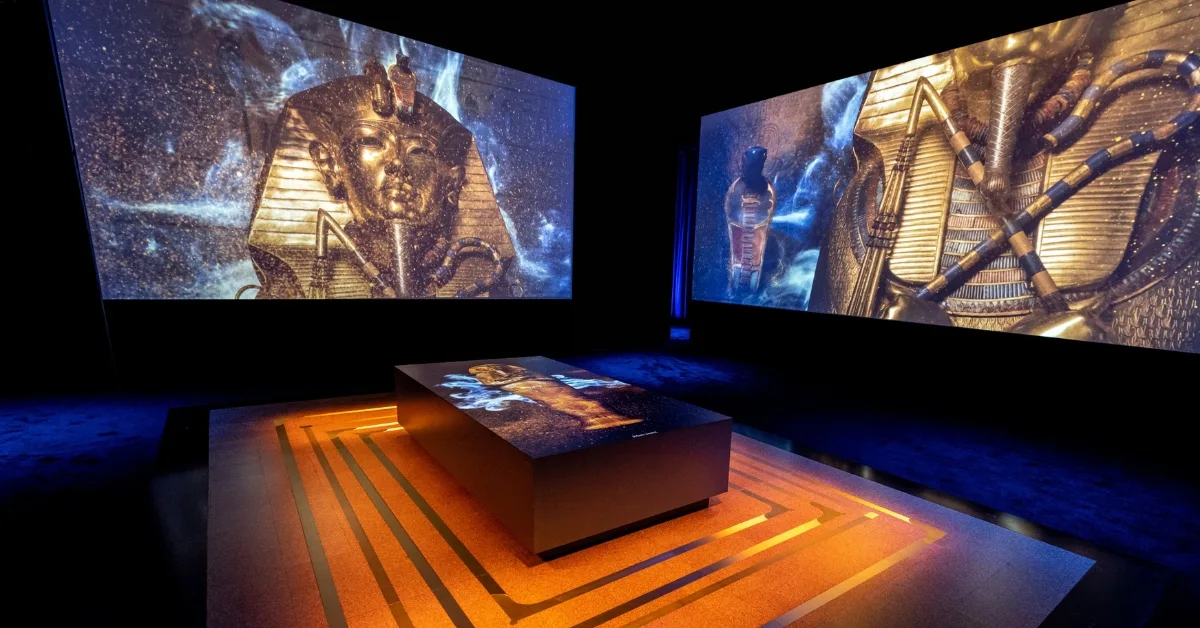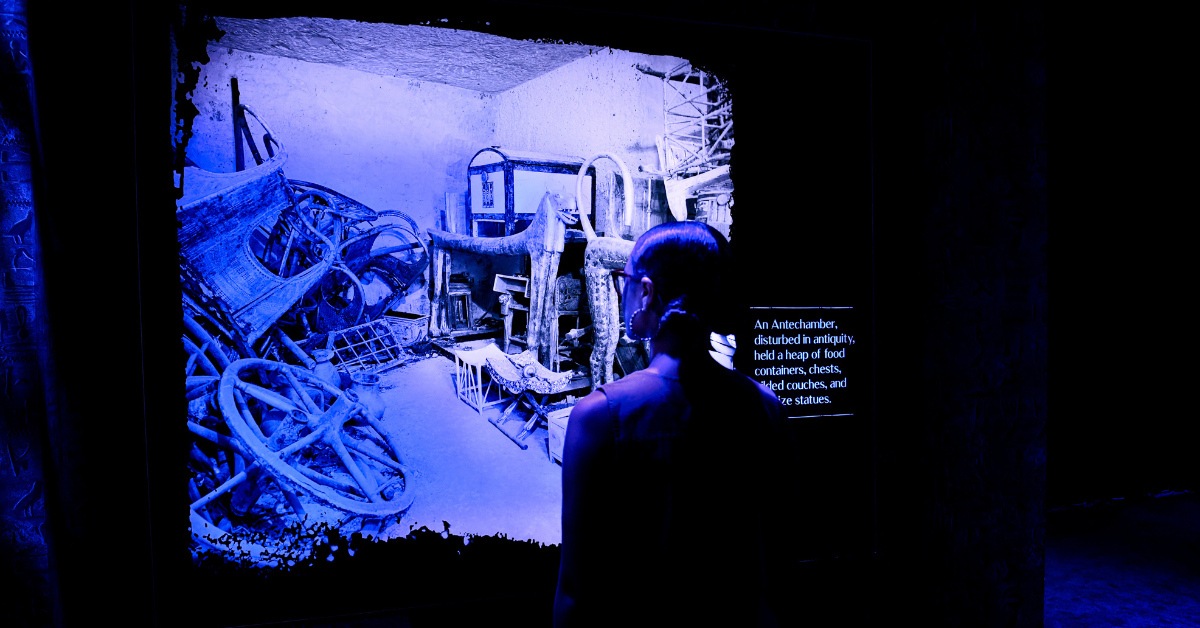
King Tutankhamun’s name alone is usually enough to bring a rush of images to mind: a tomb lost in the desert, a young king, and his golden death mask. Despite the popularity of King Tut over the last century, there was a long period before when almost nothing was known about him. For over 3,000 years the secrets of King Tut’s tomb were sealed beneath a sea of sand in the Valley of the Kings, near modern-day Luxor, Egypt. This changed when British archaeologist Howard Carter set off into the Valley in search of the answers within Tutankhamun’s tomb.
In November of 1922, the top of a carved stone staircase was discovered at Carter’s dig site. Local oral history tells a story that the step was discovered by a young boy named Hussein Abdel Rasoul who had been transporting water jugs to the laborers on Carter’s excavation team. The boy used a stick to dig holes in the ground to keep the water jugs upright, and while digging one of these holes he found the stone step. However, Howard Carter tells a different story, claiming that it was a member of his team that found the stone while digging.
By November 4 the full staircase that led to the entrance of the tomb had been uncovered. Carter immediately sent word to Lord Carnarvon, who was funding the expedition. Once Carnarvon had made his way to Egypt, the team set to work carefully cutting a small hole into the door of King Tut’s tomb. According to Howard Carter’s official account, he inserted a candle into the hole to help him see. Lord Carnarvon asked him if he could see anything, and Carter replied “Yes, it is wonderful.”

The tomb was revealed to be comprised of four small rooms: an annex, an antechamber, a treasury and the main burial chamber. There were over 5,000 individual artifacts throughout the tomb, and the team carefully cataloged each of them in a process that would end up taking nearly a decade. Prominent among all the treasures was King Tut’s sarcophagus, a carved stone container that held the Boy King’s mummified body. The world could finally begin to understand who King Tut was.
The discovery of King Tut’s tomb didn’t just reveal physical treasures, it also gave scientists a wealth of information about ancient Egypt. Now that they had found Tut’s body, they could examine it to learn more about his lifestyle — and his death. Prior to this, King Tutankhamun’s role in Egyptian history had been reduced to a footnote. Thousands of years after his death, Tut’s tomb gives us a glimpse into a long-forgotten past.
